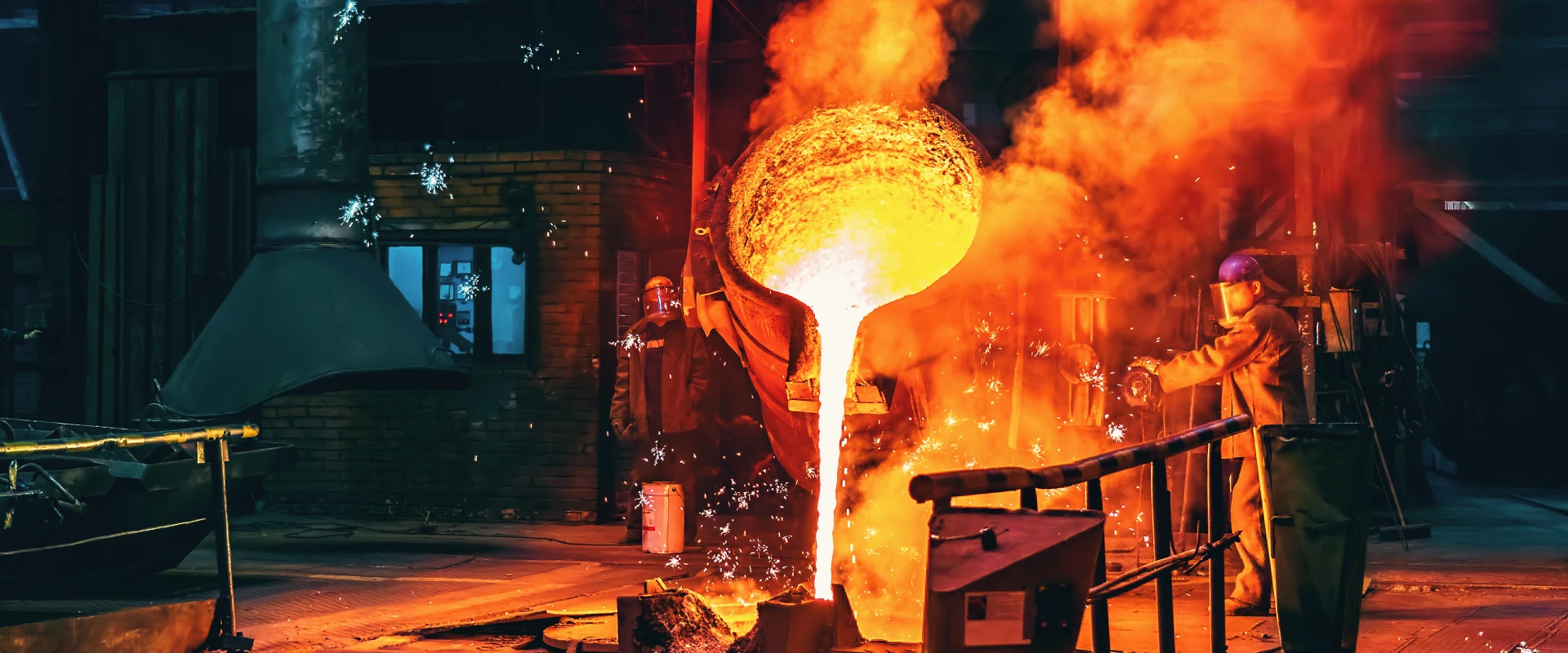Recycled Stainless Steel Smelting: Balancing Eco & Material Performance
Smelting Process of Recycled Stainless Steel: Methods for Balancing Environmental Performance and Material Properties
Recycled stainless steel is a cornerstone of sustainable manufacturing, turning scrap from old appliances, construction sites, and industrial waste into valuable new materials. Every ton of recycled stainless steel saves 1.5 tons of iron ore, 0.5 tons of coal, and 60% of the energy needed to produce new steel from raw materials. But there’s a challenge: melting down scrap can introduce impurities, uneven alloy compositions, or surface contaminants that harm the final product’s strength, corrosion resistance, or weldability. Smelting recycled stainless steel isn’t just about melting metal—it’s about refining it in a way that keeps environmental impact low while ensuring the material performs as well as virgin stainless steel. From controlling carbon emissions during melting to adjusting alloy ratios, manufacturers are mastering the art of balancing eco-friendliness with material quality. Let’s dive into how this process works and why it matters for a greener industrial future.
Why Recycled Stainless Steel Needs Special Smelting Care
Stainless steel scrap comes in a messy mix. A recycling yard might collect old 304 kitchen sinks, 316 industrial pipes, and 430 appliance trim—each with different chromium, nickel, and molybdenum levels. When thrown into a furnace together, these scraps can create uneven alloy compositions. For example, too little chromium (below 10.5%) means the steel won’t resist corrosion; too much nickel adds unnecessary cost without benefits.
Contaminants are another issue. Scrap often carries paint, oil, or galvanized coatings (zinc layers), which burn off during melting and release toxic fumes like zinc oxide. If not captured, these fumes pollute the air and can damage furnace linings. “We once melted a batch with too much galvanized scrap,” says a smelter operator. “The zinc fumes ate through our furnace brick and forced a two-day shutdown. It was expensive—and bad for the environment.”
Then there’s the material performance risk. Virgin stainless steel has tightly controlled alloy ratios, but recycled scrap can have hidden flaws: tiny cracks from previous use, or leftover carbon that makes the steel brittle. Without careful smelting, these flaws carry over into the new material, leading to weak spots in products like food processing equipment or medical tools.
The Smelting Process: From Scrap to Refined Metal
Recycled stainless steel smelting follows a precise sequence, blending efficiency with purity:
1. Scrap Sorting: The First Step to Quality
Before melting, scrap is sorted by type to avoid alloy chaos. Magnets separate ferritic stainless steels (like 430) from austenitic ones (like 304 and 316), since mixing them changes chromium and nickel levels. Workers also remove non-stainless contaminants: bolts, rubber gaskets, or plastic coatings. A recycling plant in Sweden uses automated sensors to sort scrap by alloy, reducing manual labor and improving accuracy. “Sorting cuts down on the chemicals we need to add later,” explains their process manager. “It’s better for the environment and the bottom line.”
2. Pre-Treatment: Cleaning for Cleaner Melting
Washing scrap with hot water and biodegradable detergents removes oils, paints, and dirt. For heavily coated scrap (like painted 304 panels), a pre-heating step (200–300°C) burns off organics without melting the steel. This reduces harmful emissions during smelting—one plant saw a 40% drop in volatile organic compound (VOC) releases after adding pre-treatment.
3. Melting: Balancing Heat and Emissions
Scrap goes into electric arc furnaces (EAFs), which are cleaner than traditional coal-fired furnaces. EAFs use electricity to generate temperatures up to 1.600°C, melting the steel while producing 70% less CO₂ than blast furnaces. But energy use is still high: a 100-ton EAF consumes 400–600 kWh per ton of steel. To cut this, some plants use renewable electricity (solar or wind) or capture waste heat to warm facilities. A German smelter now runs its EAF on 100% green energy, slashing its carbon footprint by 90%.
4. Refining: Adjusting Alloys and Removing Impurities
Once melted, the steel is transferred to a ladle furnace for refining. Here, operators test the alloy composition and add elements like chromium, nickel, or molybdenum to hit target levels. For example, if a batch of recycled 304 is low on chromium (17% instead of 18–20%), ferrochrome is added. Desulfurization agents (like calcium carbide) remove sulfur, which makes steel brittle, while argon gas is bubbled through the melt to stir in alloys evenly and carry off gas bubbles.
Balancing Environmental Goals During Smelting
Eco-friendly smelting means cutting energy use, emissions, and waste—without sacrificing material quality:
Energy Efficiency: EAFs with high-powered electrodes melt scrap faster, reducing idle time. A U.S. plant upgraded its EAF to 100-megawatt power, cutting melting time by 25% and energy use by 15%.
Emission Capture: Filters trap metal oxides (like zinc and lead fumes) and dust, which are then recycled themselves. A Canadian smelter recovers 95% of zinc from its emissions, selling it to battery manufacturers.
Water Conservation: Closed-loop cooling systems reuse water for furnace cooling, slashing consumption from 500 liters per ton to 50 liters. “We used to drain and treat water constantly,” says a plant engineer. “Now it circulates, saving money and reducing wastewater.”
Ensuring Recycled Steel Matches Virgin Material Quality
Recycled stainless steel must meet the same standards as virgin steel for corrosion resistance, strength, and weldability. Here’s how smelters achieve this:
Alloy Verification: Spectrometers analyze the melt every 10 minutes, ensuring chromium, nickel, and molybdenum levels stay within strict ranges. For 316. this means 16–18% chromium, 10–14% nickel, and 2–3% molybdenum. A batch that’s off by 0.5% nickel gets adjusted before casting.
Mechanical Testing: Samples from each heat are tested for tensile strength and ductility. Recycled 304 should match virgin 304’s 515 MPa minimum strength. One study found properly smelted recycled stainless steel is indistinguishable from virgin in strength tests.
Corrosion Resistance Checks: Salt spray tests (ASTM B117) expose recycled steel to salt fog for 1.000 hours. If rust forms, it means chromium levels are too low. A manufacturer of food-grade equipment rejects any recycled steel that fails—though less than 2% do with proper smelting.
Real-World Success: Plants That Master the Balance
Factories around the world are proving recycled stainless steel can be both green and high-quality:
Automotive Supplier, Spain: Uses 100% recycled 430 stainless steel for car exhaust parts. Their smelting process adjusts silicon levels to improve heat resistance, meeting OEM standards. The switch cut their carbon footprint by 60% without losing contracts.
Construction Steel Maker, Australia: Produces recycled 2205 duplex stainless steel for bridges. By carefully controlling nitrogen levels during smelting, their recycled steel matches virgin 2205’s 800 MPa strength and 30% better corrosion resistance than 316.
Appliance Manufacturer, Brazil: Recycles old refrigerators into new 304 fridge doors. Their “closed-loop” smelting captures and reuses 99% of scrap from production, with the recycled steel passing the same corrosion tests as new material.
Overcoming Common Recycled Smelting Challenges
Even with careful processes, issues arise. Here’s how smelters solve them:
Contaminant Spikes: A sudden batch of scrap with copper bolts can raise copper levels in the melt, which weakens steel. Smelters use “skimmers”—ladles with holes—to remove floating copper droplets. A plant in Italy reduced copper contamination from 0.5% to 0.05% this way.
Alloy Variability: Mixed scrap can lead to inconsistent nickel levels. Some smelters blend high-nickel scrap (like 316) with low-nickel (like 430) to hit target ratios, avoiding costly alloy additions. This “scrap blending” cuts ferroalloy use by 30%.
Oxidation Loss: Chromium burns off as oxide during melting, reducing corrosion resistance. Adding silicon (a stronger oxidizer) protects chromium—for every 0.1% silicon added, chromium loss drops by 0.2%.
Cost Considerations: Eco-Friendly vs. Affordability
Green smelting often requires upfront investment, but pays off long-term:
EAF Upgrades: A $5 million investment in a high-efficiency EAF saves $1 million yearly in energy costs. Most plants recoup costs in 5 years.
Recycled Scrap Costs: Clean, sorted scrap (like industrial offcuts) costs more than mixed scrap but reduces processing time. A U.K. smelter found paying 10% more for sorted scrap cut refining costs by 20%.
Regulatory Incentives: Carbon credits or tax breaks for low-emission smelting can offset costs. A French plant earns €50 per ton in carbon credits, making its recycled steel price-competitive with virgin.
Future Trends in Recycled Stainless Smelting
Innovation is making recycled stainless steel even greener and higher-quality:
Direct Reduction: New furnaces melt scrap at lower temperatures using hydrogen instead of natural gas, cutting CO₂ emissions to near-zero. A pilot plant in Sweden produces recycled 304 with 95% less carbon than traditional EAFs.
AI-Controlled Refining: Machine learning algorithms adjust alloy additions in real time, reducing overuse of expensive nickel by 15%. A U.S. smelter reports more consistent alloy levels with AI than manual control.
Circular Partnerships: Appliance makers like IKEA now design products for easy stainless steel recycling, sending old items directly to smelters with alloy composition data. This cuts sorting time and improves material consistency.
Why This Balance Matters for the Planet
Recycled stainless steel isn’t just a “green alternative”—it’s becoming the standard. With global stainless steel demand rising 5% yearly, recycling is the only way to meet needs without depleting resources or worsening climate change. A ton of recycled stainless steel keeps 2 tons of scrap out of landfills and avoids 3 tons of CO₂ emissions.
For manufacturers, using recycled stainless steel isn’t just good PR—it’s smart business. Customers increasingly demand sustainable products, and recycled steel meets their standards without compromising performance. “Our clients don’t care if the steel is recycled or virgin,” says a construction materials supplier. “They just care if it works. Ours does—and it’s better for the planet.”
As smelting techniques improve, recycled stainless steel will only get cleaner, cheaper, and more reliable. It’s a win-win: a material that builds the world we need while preserving the world we have.

